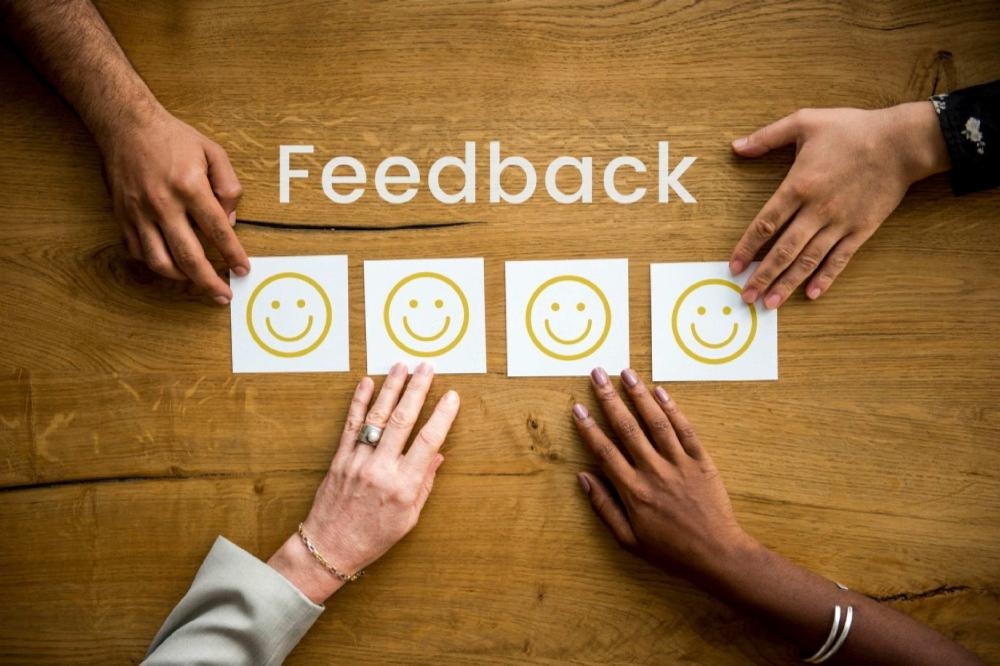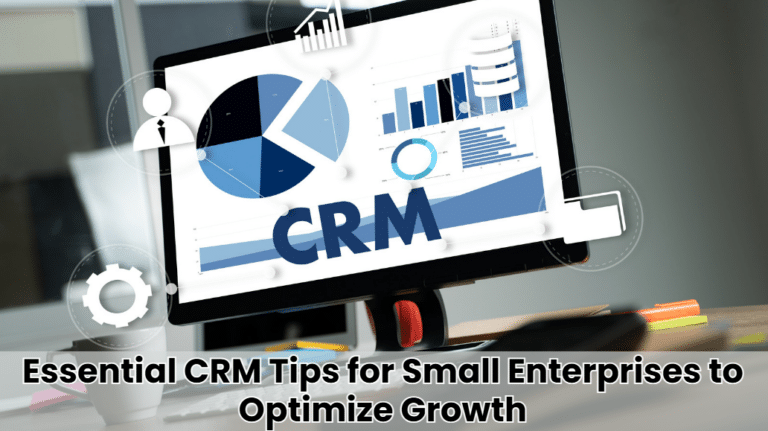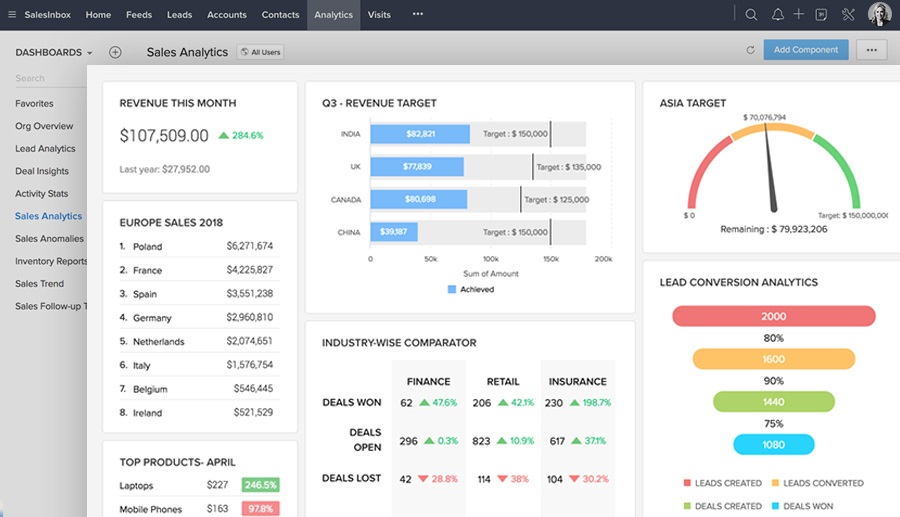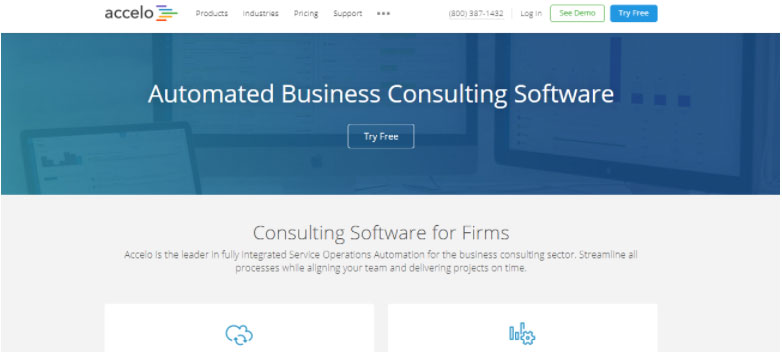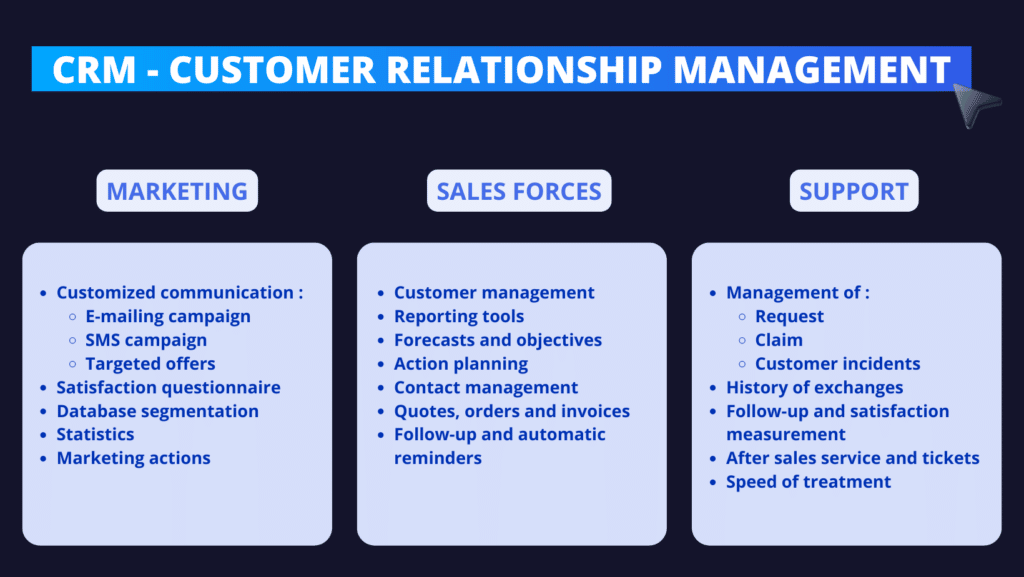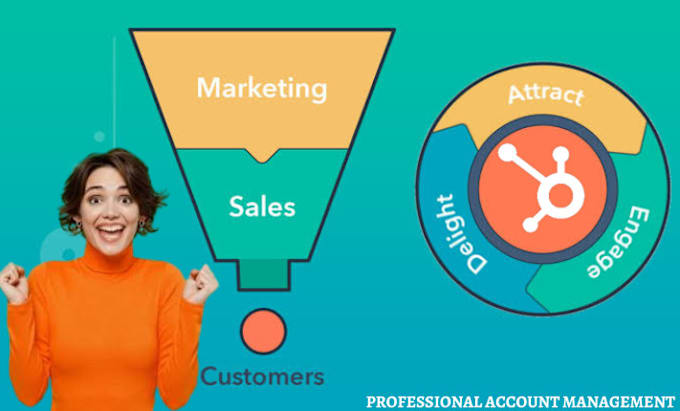
Introduction: Why Your CRM Marketing Funnel Matters
In today’s competitive digital landscape, simply having a Customer Relationship Management (CRM) system isn’t enough. You need to harness its power to build a robust marketing funnel. This isn’t just about collecting data; it’s about orchestrating a seamless journey for your prospects, guiding them from initial awareness to becoming loyal customers. A well-structured CRM marketing funnel is the backbone of effective lead generation, nurturing, and conversion, directly impacting your bottom line. It’s about understanding your customer’s needs, anticipating their pain points, and providing tailored solutions at every stage of their interaction with your brand.
This comprehensive guide will walk you through the process of setting up your CRM marketing funnel, from initial planning to optimization. We’ll delve into the crucial stages, the tools you’ll need, and the best practices to ensure your funnel is not only functional but also a high-performing engine for growth. We will explore how to align your marketing efforts with your sales team, create targeted content, and analyze your results to continuously improve your conversion rates. Get ready to transform your CRM from a database into a dynamic marketing powerhouse.
Understanding the CRM Marketing Funnel: The Core Stages
Before diving into the setup, it’s essential to grasp the fundamental stages of a CRM marketing funnel. This framework provides a roadmap for understanding how potential customers interact with your brand and the strategies you can employ at each point to move them closer to a purchase. The classic funnel model is often visualized as a wide top that narrows as prospects progress through the stages.
1. Awareness Stage (Top of the Funnel – TOFU)
This is the first point of contact, where potential customers become aware of your brand and its offerings. The goal here is to generate interest and attract attention. Think of it as casting a wide net. Activities at this stage include:
- Content Marketing: Creating blog posts, articles, infographics, videos, and social media updates that address your target audience’s pain points and interests.
- SEO Optimization: Ensuring your website and content are optimized for search engines to improve organic visibility.
- Social Media Marketing: Engaging with your target audience on platforms like Facebook, Instagram, Twitter, and LinkedIn.
- Paid Advertising: Utilizing platforms like Google Ads and social media advertising to reach a wider audience.
The key metric at this stage is reach and impressions. You want to get your brand in front of as many relevant eyes as possible. Think of it as building brand recognition.
2. Interest Stage (Middle of the Funnel – MOFU)
Once prospects are aware of your brand, the next step is to pique their interest. This stage focuses on educating and informing potential customers about your products or services and why they’re the best solution for their needs. Activities include:
- Lead Magnets: Offering valuable resources like ebooks, white papers, checklists, or webinars in exchange for contact information.
- Email Marketing: Nurturing leads with targeted email campaigns that provide valuable content and build relationships.
- Retargeting Ads: Displaying ads to users who have previously interacted with your website or content.
- Case Studies and Testimonials: Showcasing the success of your products or services through real-world examples.
The focus here shifts to engagement and lead nurturing. Track metrics like email open rates, click-through rates, and the number of leads generated.
3. Decision Stage (Bottom of the Funnel – BOFU)
This is where prospects are actively considering making a purchase. The goal is to provide them with the information and incentives they need to convert. Activities include:
- Product Demos and Trials: Allowing potential customers to experience your product or service firsthand.
- Special Offers and Promotions: Providing discounts, free shipping, or other incentives to encourage a purchase.
- Sales Calls and Consultations: Providing personalized support and answering any remaining questions.
- Comparison Pages: Highlighting the advantages of your product or service over competitors.
The key metric here is conversion rate. Focus on closing deals and turning leads into paying customers.
4. Action Stage (Post-Purchase)
The funnel doesn’t end with a sale. This is where you focus on customer retention and building loyalty. Activities include:
- Onboarding: Providing a smooth onboarding experience to help new customers get started with your product or service.
- Customer Support: Offering excellent customer service to address any issues or concerns.
- Email Marketing: Sending thank-you emails, product updates, and exclusive offers to existing customers.
- Loyalty Programs: Rewarding repeat customers with exclusive benefits and discounts.
The focus here is on customer lifetime value (CLTV). Track metrics like customer retention rate, repeat purchase rate, and customer satisfaction scores.
Choosing the Right CRM System for Your Marketing Funnel
Selecting the right CRM is a critical first step. The best CRM for you will depend on your business size, industry, budget, and specific marketing needs. Here are some of the leading CRM platforms and their key features:
1. Salesforce
Salesforce is a comprehensive, enterprise-level CRM known for its extensive features and customization options. It’s ideal for large businesses with complex sales and marketing processes. Key features include:
- Sales Cloud: Sales force automation, lead management, and opportunity tracking.
- Marketing Cloud: Email marketing, social media marketing, and marketing automation.
- Service Cloud: Customer service and support management.
- Extensive integrations with other business applications.
2. HubSpot CRM
HubSpot offers a free CRM that’s perfect for small to medium-sized businesses. It’s known for its user-friendliness and robust marketing automation features. Key features include:
- Contact management and lead tracking.
- Email marketing and marketing automation.
- Sales automation and pipeline management.
- Free version with paid upgrades for advanced features.
3. Zoho CRM
Zoho CRM is a versatile and affordable option for businesses of all sizes. It offers a wide range of features and integrations. Key features include:
- Lead management and sales force automation.
- Email marketing and workflow automation.
- Customization options to fit specific business needs.
- Integration with other Zoho applications.
4. Pipedrive
Pipedrive is a sales-focused CRM designed to help sales teams manage their pipelines and close deals. It’s known for its intuitive interface and visual pipeline management. Key features include:
- Visual sales pipeline management.
- Deal tracking and sales automation.
- Email integration and sales reporting.
- Mobile app for on-the-go access.
5. Microsoft Dynamics 365
Microsoft Dynamics 365 is a comprehensive CRM platform that integrates with other Microsoft products. It’s a good choice for businesses that already use the Microsoft ecosystem. Key features include:
- Sales, marketing, and customer service modules.
- Integration with Microsoft Office 365 and other Microsoft products.
- AI-powered insights and analytics.
- Customization options and scalability.
Consider these factors when choosing a CRM:
- Ease of Use: How user-friendly is the interface? Is it easy to navigate and learn?
- Features: Does it offer the features you need, such as lead management, email marketing, and sales automation?
- Integrations: Does it integrate with other tools you use, such as your website, email marketing platform, and social media channels?
- Scalability: Can it grow with your business?
- Pricing: What’s the cost, and does it fit your budget?
Setting Up Your CRM Marketing Funnel: A Step-by-Step Guide
Once you’ve selected your CRM, it’s time to start setting up your marketing funnel. This process involves several key steps:
1. Define Your Target Audience
Before you start building your funnel, you need to know who you’re targeting. Create detailed buyer personas that represent your ideal customers. Consider their demographics, psychographics, pain points, goals, and online behavior. The more specific you are, the better you can tailor your marketing efforts.
- Demographics: Age, gender, location, income, education, job title.
- Psychographics: Values, interests, lifestyle, personality traits.
- Pain Points: What problems are they trying to solve?
- Goals: What are they hoping to achieve?
- Online Behavior: Where do they spend their time online? What websites do they visit? What social media platforms do they use?
2. Map Your Customer Journey
Understand the different stages your customers go through, from initial awareness to purchase and beyond. Map out the touchpoints where they interact with your brand, including your website, social media, email, and sales calls. This will help you identify opportunities to engage them and move them through the funnel. Consider creating a customer journey map that visually represents the different stages and touchpoints.
3. Set Up Lead Capture Forms
Lead capture forms are essential for collecting contact information from potential customers. Place these forms on your website, landing pages, and other relevant locations. Offer valuable content or incentives in exchange for their information. Ensure your forms are mobile-friendly and easy to fill out. Consider using progressive profiling to collect more information over time.
- Website Forms: Place forms on your contact page, about us page, and other relevant pages.
- Landing Pages: Create dedicated landing pages for specific offers and promotions.
- Pop-up Forms: Use pop-up forms to capture leads as they browse your website.
- Social Media Forms: Utilize lead generation forms on platforms like Facebook and LinkedIn.
4. Create Targeted Content
Develop content that aligns with each stage of the funnel. For the awareness stage, create content that attracts attention and educates your target audience. For the interest stage, provide valuable content that addresses their pain points and positions your product or service as the solution. For the decision stage, offer product demos, testimonials, and special offers. For the action stage, provide excellent customer service and build relationships.
- Awareness Stage: Blog posts, articles, infographics, videos, social media updates.
- Interest Stage: Ebooks, white papers, checklists, webinars, case studies.
- Decision Stage: Product demos, special offers, comparison pages.
- Action Stage: Onboarding guides, customer support resources, loyalty programs.
5. Implement Email Marketing Automation
Automate your email marketing efforts to nurture leads and move them through the funnel. Set up automated email sequences for lead nurturing, onboarding, and customer retention. Segment your audience based on their behavior and interests to send targeted emails. Track your email open rates, click-through rates, and conversion rates to optimize your campaigns.
- Welcome Emails: Send a welcome email to new subscribers.
- Lead Nurturing Emails: Provide valuable content and build relationships with leads.
- Onboarding Emails: Guide new customers through the onboarding process.
- Promotional Emails: Send special offers and promotions to encourage purchases.
6. Integrate with Social Media
Connect your CRM with your social media channels to track social interactions, monitor brand mentions, and engage with your audience. Use social media to drive traffic to your website and landing pages. Run social media advertising campaigns to reach a wider audience and generate leads. Utilize social listening tools to monitor brand mentions and sentiment.
7. Set Up Sales Automation
Automate your sales processes to improve efficiency and close deals faster. Set up automated workflows for lead assignment, follow-up, and deal tracking. Use a CRM to manage your sales pipeline and track the progress of each deal. Integrate your CRM with your sales team’s email and calendar for seamless communication and scheduling.
8. Create Reports and Track Key Metrics
Set up reports to track your marketing funnel’s performance and identify areas for improvement. Track key metrics, such as website traffic, lead generation, conversion rates, customer acquisition cost (CAC), and customer lifetime value (CLTV). Analyze your data regularly to identify trends and optimize your campaigns. Use dashboards to visualize your data and track your progress.
Optimizing Your CRM Marketing Funnel: Continuous Improvement
Setting up your CRM marketing funnel is just the beginning. To achieve long-term success, you need to continuously optimize your funnel. This involves analyzing your results, making adjustments, and testing new strategies. Here’s how to optimize your funnel:
1. Analyze Your Data Regularly
Regularly review your reports and track key metrics. Identify any bottlenecks or areas where your funnel is underperforming. Look for trends and patterns in your data to gain insights into your customers’ behavior. Use data to inform your decisions and make adjustments to your campaigns.
2. A/B Test Your Content and Campaigns
A/B testing involves creating two or more versions of your content or campaigns and testing them against each other to see which performs better. Test different headlines, subject lines, calls to action, and landing page designs. Use A/B testing to optimize your conversion rates and improve your overall funnel performance. Continuously test different variables.
3. Refine Your Buyer Personas
As your business evolves, so should your buyer personas. Regularly review and update your buyer personas based on your data and customer feedback. Make sure your personas accurately reflect your target audience and their needs. Refine your messaging and content to better resonate with your target audience.
4. Segment Your Audience
Segment your audience based on their behavior, interests, and demographics. This allows you to send targeted emails and personalize your marketing efforts. Segmenting your audience can significantly improve your engagement and conversion rates. Use your CRM to segment your audience based on various criteria.
5. Improve Your Website User Experience
Make sure your website is user-friendly and easy to navigate. Optimize your website for mobile devices. Ensure your website is fast and responsive. Improve your website’s design and content to provide a better user experience. A positive user experience can significantly improve your conversion rates.
6. Gather Customer Feedback
Collect feedback from your customers through surveys, interviews, and reviews. Use customer feedback to identify areas where you can improve your product or service and your marketing efforts. Respond to customer feedback and address any issues or concerns. Customer feedback is invaluable for optimizing your funnel.
7. Stay Up-to-Date with Industry Trends
The marketing landscape is constantly evolving. Stay up-to-date with the latest industry trends and best practices. Attend webinars, read industry blogs, and participate in online communities. Adapt your strategies to reflect the latest trends and technologies. Continuous learning is key to success.
Advanced CRM Marketing Funnel Strategies
Once you have the basics of your CRM marketing funnel in place, you can explore more advanced strategies to further enhance your results. Here are some ideas:
1. Lead Scoring
Implement lead scoring to prioritize your leads based on their behavior and engagement. Assign points to leads based on their actions, such as website visits, email opens, and form submissions. Focus your sales efforts on the leads with the highest scores. This will optimize your sales team’s time and improve conversion rates.
2. Dynamic Content
Use dynamic content to personalize your website and email content based on each visitor’s behavior and interests. This will make your content more relevant and engaging. Dynamic content can significantly improve your conversion rates. Use your CRM to create and manage dynamic content.
3. Retargeting Campaigns
Run retargeting campaigns to re-engage users who have previously interacted with your website or content. Show them targeted ads based on their past behavior. Retargeting can significantly improve your conversion rates. Use your CRM and advertising platforms to set up retargeting campaigns.
4. Chatbots
Implement chatbots on your website to provide instant customer support and answer frequently asked questions. Chatbots can also qualify leads and schedule appointments. Chatbots can improve your customer service and generate more leads. Integrate your chatbot with your CRM.
5. Predictive Analytics
Use predictive analytics to forecast customer behavior and identify potential opportunities. Use your CRM to analyze your data and identify trends. Predictive analytics can help you optimize your marketing efforts and improve your ROI. Integrate your CRM with predictive analytics tools.
Conclusion: The Power of a Well-Defined CRM Marketing Funnel
Setting up and optimizing your CRM marketing funnel is a continuous journey, not a destination. By understanding the core stages, choosing the right CRM, and implementing the strategies outlined in this guide, you can transform your marketing efforts and drive significant growth. Remember to focus on your target audience, provide value at every stage, and continuously analyze and improve your results. With a well-defined CRM marketing funnel, you can build stronger customer relationships, increase conversions, and achieve lasting success.
The key to success lies in consistent effort, data-driven decision-making, and a commitment to providing exceptional value to your customers. By embracing the principles of a well-structured CRM marketing funnel, you’ll not only attract new customers but also cultivate long-term loyalty and drive sustainable growth for your business. This is more than just setting up a process; it’s about building a thriving community around your brand.

